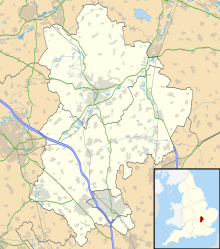A motor glider is a fixed-wing aircraft that can be flown with or without engine power. The FAI Gliding Commission Sporting Code definition is: a fixed-wing aerodyne equipped with a means of propulsion (MoP), capable of sustained soaring flight without thrust from the means of propulsion.

The Schempp-Hirth Discus is a Standard Class glider designed by Schempp-Hirth. It was produced in Germany between 1984 and 1995 but has continued in production in the Czech Republic. It replaced the Standard Cirrus. It was designed by Klaus Holighaus.

The Rolladen-Schneider LS4 is a Standard Class single seat glider manufactured by Rolladen-Schneider Flugzeugbau GmbH between 1980 and 2003.

The Schempp-Hirth Mini Nimbus is a 15 Metre-class glider designed and built by Schempp-Hirth GmbH in the late 1970s.

The Schempp-Hirth Cirrus is an Open Class glider built by Schempp-Hirth between 1967 and 1971 and by VTC until 1977. It was replaced by the Nimbus 2.

The Schempp-Hirth Nimbus 3 is a glider built by Schempp-Hirth.

The ASK 21 is a glass-reinforced plastic (GRP) two-seat glider aircraft with a T-tail. The ASK 21 is designed primarily for beginner instruction, but is also suitable for cross-country flying and aerobatic instruction.
Rockton Aerodrome is located in Flamborough, Ontario 1.5 nautical miles west of Rockton, Ontario, Canada.

The ASW 19 is a single-seat glider built by Alexander Schleicher GmbH & Co, first flying in 1975. It was originally designed as a Standard Class glider, but now mainly competes in the Club Class. The ASW 19 is known for its pleasant handling and some clubs use it as a training glider. It was succeeded by the all-new Schleicher ASW 24.

The Scottish Gliding Union is the largest gliding club in Scotland. The body is based at Portmoak Airfield, Scotlandwell, KY13 9JJ.
The European Gliding Championships is a gliding competition held every two years.

Wycombe Air Park, also known as Booker Airfield, is an operational general aviation aerodrome located in Booker, Buckinghamshire, 2.4 nautical miles south-west of High Wycombe, England. The airfield celebrated its 50th year of opening on 25 April 2015. It originally opened in 1941 as RAF Booker and was primarily involved in training during World War II, remaining a military establishment until 1965.

Gliding is a recreational activity and competitive air sport in which pilots fly unpowered aircraft known as gliders or sailplanes using naturally occurring currents of rising air in the atmosphere to remain airborne. The word soaring is also used for the sport.

The Slingsby T.3 Primary was a single-seat training glider produced in the 1930s by Fred Slingsby in Kirbymoorside, Yorkshire.

A glider or sailplane is a type of glider aircraft used in the leisure activity and sport of gliding. This unpowered aircraft can use naturally occurring currents of rising air in the atmosphere to gain altitude. Sailplanes are aerodynamically streamlined and so can fly a significant distance forward for a small decrease in altitude.

Akaflieg Berlin is one of around thirteen flying groups, or Akaflieg, currently attached to German universities. Akaflieg Berlin, is the abbreviation of Akademische Fliegergruppe Berlin e.V., a group of students enrolled at several Berlin universities, though they are mainly from TU Berlin, who are involved with the development and the design of gliders, as well as research in aerodynamics. Founded in 1920 Akaflieg Berlin is one of the oldest gliding clubs in Germany, flying their gliders from Kammermark airfield near Pritzwalk, which they share with the AFV Berlin, which mainly consists of former members of Akaflieg Berlin, jokingly referred to as the “elderly ladies and gentlemen”. As at 2007/2008 Akaflieg Berlin was the executive group of the Idaflieg, the controlling body for all German university flying groups.
Booker Gliding Club was formed in 1978 following the amalgamation of Thames Valley Gliding Club and Airways Flying Club. It is based at Wycombe Air Park. Trading as Booker Gliding Centre, it is a community amateur sports club and a member of the British Gliding Association.

The Royal Air Force Gliding & Soaring Association (RAFGSA) is a voluntary organisation which exists to provide recreational flying to all RAF servicemen and women, in particular those employed in ground duties.

The Jacobs Hols der Teufel was a single seat trainer glider produced in complete and plan forms in Germany from 1928. It was built and used worldwide.

Bowland Forest Gliding Club is a British gliding club near the village of Chipping, Lancashire. It was formed as the Blackpool and Fylde Gliding Club in 1930, and is a members-only club, with no paid employees. It owns its airfield, generally called Chipping Airfield, but also known as Bowland Forest, Fiddlers Lane or Lower Cock Hill Farm.
















